A Sense of Doubt blog post #2028 - Comic books and Racism part one
So, I am doing another talk at my college. This time it's focused on racism in comic books and how comic books can be a vehicle for social change. I am teaming up with my friend and colleague Abbie Leavens, who will talk about the racism and anti-racism parts in general, while I talk about comic books.
Of course, I am going to do a lot of the prep on my blog.
There's some instances of bigotry that are not specifically "racism" but that's okay. I hate bigotry of all kinds.
In keeping with my "taking a break," here's what I have collected so far.
Happy Comic Book Sunday.
https://blog.gocollect.com/what-should-we-do-with-comics-depicting-racism/
What Should We Do With Comics Depicting Racism?
 If there is anything that the past few weeks have taught us about our country, it’s that there is no individual, entity, or organization that shouldn’t be taking a long, hard look in the mirror at their past (and present) to determine what biases did and do exist. Everything from governmental departments, the military, companies, nonprofits, universities, and countless other aspects of our daily lives are under the microscope as they are finally reckoning with their past actions and current reactions.
If there is anything that the past few weeks have taught us about our country, it’s that there is no individual, entity, or organization that shouldn’t be taking a long, hard look in the mirror at their past (and present) to determine what biases did and do exist. Everything from governmental departments, the military, companies, nonprofits, universities, and countless other aspects of our daily lives are under the microscope as they are finally reckoning with their past actions and current reactions.
Unfortunately, but not surprisingly, the comic book industry is not immune to this self-examination. Let’s explore some comics with seemingly racist overtones and discuss what should be done with them.
More recently than any of us probably care to admit, comics were a breeding ground for stereotyping, whitewashing, and generally stomping out the idea that people are equals – even as some of them have powers beyond our imaginations. For an industry that has existed in this country for more than 100 years, you can only imagine what types of content exist.
How Should Comic Collectors Respond to Racist Comics?
As responsible comic book collectors, investors, and speculators, it should be up to us to help repair (not erase) that part of this hobby and make it clear that we don’t stand for that type of treatment of  characters within the pages of our favorite books.
characters within the pages of our favorite books.
 characters within the pages of our favorite books.
characters within the pages of our favorite books.
With that in mind, I want to point out some of the more egregious and prevalent comics from our past with an eye towards removing these symbols of ass-backward thinking from current and future comic book lovers. Many of these are going for a decent amount, although I would not consider any of these books as major keys.
I am decidedly not a book-burning advocate. I’ve read Fahrenheit 451 and I understand the dangers of censorship. But I personally feel strongly that we should be removing these symbols of racist comics from our collections. Do they represent a different time, a part of our past that was culturally different? Yes. But in 2020, they likely belong in the trash, not praised.
(Much of this list comes from writers who have wonderfully researched these issues including articles from Complex, Guff, and Ranker.)
Racist Comics From the Past
While some of these offenses show up in single issues, several also span the entire series. The following are merely a sample of the comics that fit this description.
The Depiction of Black Sidekicks in Young Allies and Captain Marvel
It won’t surprise you to learn the 1940s and 1950 were not a time that was generally kind to African- Americans in print. Exhibits 1A and 1B would be the Bucky Barnes’ led group Young Allies and Captain Marvel’s run, both published at the height of World War II. I suppose the publishers at the time thought these were redeemable and acceptable characters because they were fighting the evil Nazis, but in hindsight, they ended up being racist caricatures that were all too common in those years.
Americans in print. Exhibits 1A and 1B would be the Bucky Barnes’ led group Young Allies and Captain Marvel’s run, both published at the height of World War II. I suppose the publishers at the time thought these were redeemable and acceptable characters because they were fighting the evil Nazis, but in hindsight, they ended up being racist caricatures that were all too common in those years.
 Americans in print. Exhibits 1A and 1B would be the Bucky Barnes’ led group Young Allies and Captain Marvel’s run, both published at the height of World War II. I suppose the publishers at the time thought these were redeemable and acceptable characters because they were fighting the evil Nazis, but in hindsight, they ended up being racist caricatures that were all too common in those years.
Americans in print. Exhibits 1A and 1B would be the Bucky Barnes’ led group Young Allies and Captain Marvel’s run, both published at the height of World War II. I suppose the publishers at the time thought these were redeemable and acceptable characters because they were fighting the evil Nazis, but in hindsight, they ended up being racist caricatures that were all too common in those years.
Bucky’s ally, Whitewash Jones, not only had a superficially racist name but was drawn in a way that made him look more creature than an animal. He was sloppily dressed and had a protruding mouth and lips, he spoke broken English and was generally represented as a simpleton. Whitewash was often a device that forced Bucky to have to overcome additional obstacles instead of just assisting in the fight against the Germans. Marvel would later denounce the whole series, but it doesn’t wash the pages clean of this ugly representation.
Elsewhere in the industry, the early Captain Marvel had a sidekick named Steamboat. “Sidekick” may be too generous of a term because he essentially served as Captain Marvel’s de facto servant until 1945 when, on appeal from school children, the character was no longer used. Whatever awful features were used to depict Whitewash Jones were amplified with Steamboat, and he carried himself with the same poor English and bumbling persona as his Young Allies counterpart. To say these depictions of black characters were uncommon at this time would be a lie, and it is useful to understand that while we were fighting injustice and oppression on one side of the world, we were buying it up left and right on our own soil.
I use these two examples as representative of a larger problem that existed in that timeframe. Whether it was these two derogatory sidekicks, Batman frequently calling Asian foes “Chinamen”, Captain America battling “yellow” Asian foes,, Green Lantern’s Eskimo pal “Pieface”, or Superman and Jimmy Olsen working alongside red-skinned Native Americans, this period of comic history has more than its share of repulsive images.
Black Goliath – Power Man #24
The comic industry, unfortunately, has a long history of labeling African-American superheroes as “Black” Something. Familiar names such as Black Panther, Black Lightning, and Black Racer come to mind immediately, but Black Goliath, introduced by Marvel in 1975, is a particularly interesting case study.
William Foster was born and raised in the ghetto of Watts in Los Angeles (stop me if you’ve heard this  stereotype before). Marvel deserves credit for giving Foster unbelievable intelligence which allowed him to attend the California Institute of Technology and become a lab assistant for Hank Pym. After years of working with Pym, Foster decided to try the Pym Particles on himself, enlarging his stature to 10 feet. With Pym’s blessing, Foster takes on the moniker of Black Goliath and works his way to a life of crime-fighting. Before this happens, however, he does end up as a circus sideshow for the Circus of Crime for a period of time. Why? I don’t have a clue.
stereotype before). Marvel deserves credit for giving Foster unbelievable intelligence which allowed him to attend the California Institute of Technology and become a lab assistant for Hank Pym. After years of working with Pym, Foster decided to try the Pym Particles on himself, enlarging his stature to 10 feet. With Pym’s blessing, Foster takes on the moniker of Black Goliath and works his way to a life of crime-fighting. Before this happens, however, he does end up as a circus sideshow for the Circus of Crime for a period of time. Why? I don’t have a clue.
 stereotype before). Marvel deserves credit for giving Foster unbelievable intelligence which allowed him to attend the California Institute of Technology and become a lab assistant for Hank Pym. After years of working with Pym, Foster decided to try the Pym Particles on himself, enlarging his stature to 10 feet. With Pym’s blessing, Foster takes on the moniker of Black Goliath and works his way to a life of crime-fighting. Before this happens, however, he does end up as a circus sideshow for the Circus of Crime for a period of time. Why? I don’t have a clue.
stereotype before). Marvel deserves credit for giving Foster unbelievable intelligence which allowed him to attend the California Institute of Technology and become a lab assistant for Hank Pym. After years of working with Pym, Foster decided to try the Pym Particles on himself, enlarging his stature to 10 feet. With Pym’s blessing, Foster takes on the moniker of Black Goliath and works his way to a life of crime-fighting. Before this happens, however, he does end up as a circus sideshow for the Circus of Crime for a period of time. Why? I don’t have a clue.
It’s interesting why Marvel and Hank Pym – who had given up the Giant-Man/Goliath moniker – didn’t just give Foster the Goliath name outright. That didn’t happen until four years later in 1979 when he would change to Giant-Man in Marvel Two-In-One #55. So for as much credit as organizations like Marvel and DC should receive for introducing strong black characters like Falcon and John Stewart’s Green Lantern, we shouldn’t forget that these publishing houses still found it necessary to give these characters the “Black” description, a label never given to any white heroes, as far as I can tell.
Sam Wilson as a Mobster – Captain America #186
Unfortunately, Falcon’s story across the 1970s wasn’t all that Stan Lee originally planned for it to be. In Captain America #186, Marvel essentially rewrote Wilson’s backstory, giving it a much darker influence. Wilson was originally described as a hard-working social worker from Harlem whose parents had been murdered and who had turned to birds as a passion and a hobby. His original backstory had his crash on a remote island while on a work assignment, where he was subsequently trapped by Red Skull. Eventually, with the help of Captain America and Black Panther, Wilson was able to escape and adopt the mantle of Falcon (and eventually Captain America).
But in the mid-1970s Marvel decided to redo that story and make Wilson a mobster who moved to Los Angeles from Harlem. Giving him stereotypical pimp outfits, this issue tried to recreate a character’s whole story, but a combination of backlash and common sense led to a retcon of this story as merely something Red Skull planted in Wilson’s brain to try and manipulate him.

It’s difficult for me in 2020 to try and justify a reason why this would be necessary for a popular character, especially one who helped usher in a strong decade of black heroes, but sometimes implicit biases and stereotypes creep in – no matter how hard we try – and we get stories where an upstanding black hero is reduced to a criminal.
Lois Lane is Black For a Day – Superman’s Girlfriend Lois Lane #106
As you can probably tell, the 1970s were not a kind decade to the idea of progress in the comic industry. For every step forward there seemed to be two steps back. But sometimes those were leaps  back instead of steps, as in the story-line in this issue where Lois Lane – with Superman’s help – changes from white to black for a day to write a story where she can better understand what it meant to be black in the “Little Africa” part of Metropolis.
back instead of steps, as in the story-line in this issue where Lois Lane – with Superman’s help – changes from white to black for a day to write a story where she can better understand what it meant to be black in the “Little Africa” part of Metropolis.
 back instead of steps, as in the story-line in this issue where Lois Lane – with Superman’s help – changes from white to black for a day to write a story where she can better understand what it meant to be black in the “Little Africa” part of Metropolis.
back instead of steps, as in the story-line in this issue where Lois Lane – with Superman’s help – changes from white to black for a day to write a story where she can better understand what it meant to be black in the “Little Africa” part of Metropolis.
As a black woman, Lois encounters many hardships. She can’t catch a cab, for example, and is taught what she feels are valuable lessons about the differences between people of different races.
Where the story falls flat and proved so controversial is that it grossly underestimates what it means to live a life as black. Lois Lane can’t come close to comprehending what it is like after only a day or two, so while the creators meant well, it came off as lacking empathy and trying to whitewash a problem.
What Should We Do With Racist Comics Now?
For starters, we could all go full Michael Corleone and renounce these comics and images for what they are: racism. While it is helpful to understand how far we have come, we must not forget how far there still is to go. Your money is better spent on stronger, more well-rounded minority characters than these depictions of past stereotypes.
Here’s hoping you will join me in purging our collections of a dark part of our country’s past. What are you doing with these and other similar comics? Let me know in the comments.
GoCollect is the #1 comic book price guide for tracking sales data of all graded comic books in real-time. Fair market values are now at your fingertips. Check out all the features at www.gocollect.com.
About Post Author
Ryan Kirksey
The Most Racist Moments in Comics
https://www.ranker.com/list/racist-comic-book-moments/ranker-comics
Updated July 28, 2020
Like all forms of populist art, comic books have had the unwanted fate of growing up in front of our eyes, constantly shedding its skin and showing off its warts and bad haircuts. And there's no worse wart than that of racism. Seeing your favorite superheroes toss around racial epithets and fight enemies based on their color and heritage isn’t fun, and in some cases it genuinely hurts to see a few of the panels that we’ve included on this list – but we think it’s important to see where we come from and far we’ve progressed since The Shadow was tooling around with an awful caricature of Black culture. This list of the most racist moments in the history of comics should be seen as a historical marker to be learned from, not an unsightly blemish to avoid at all costs.
Living in the 21st century (as one does), it’s hard to contextualize the only representation of non-Caucasian races being either sneering, cowardly villains, or as lazily slapped together distortions of a culture, but somehow almost every comic book writer from 1930 to the late '60s managed to do it. And even some modern comic artists still strive to create racist garbage, and yes, we’ve collected them all on this list of racist moments from comic book history.
Captain Marvel Owned A Slave
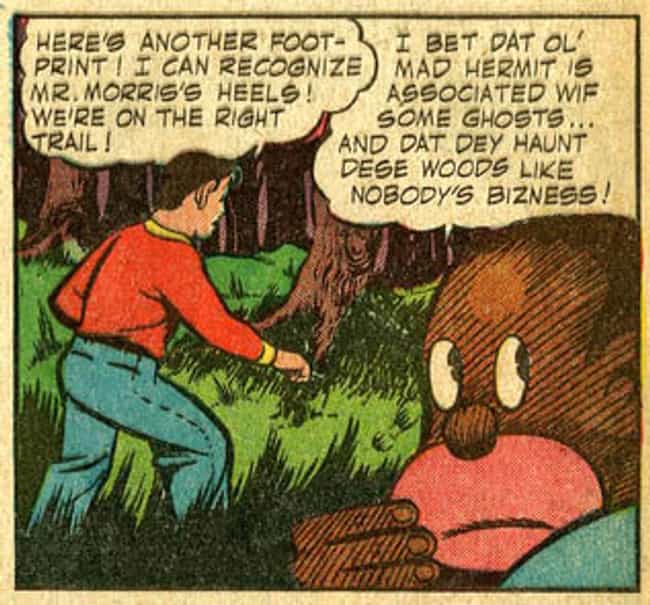
Sometimes when you learn about the buried past of the things you love (comics, old metal bands), you realize that you should have let sleeping dogs lie. In particular, the superhero with with a little boy inside of him, Captain Marvel. In the '40s, Billy Batson owned a slave named Steamboat who was as much a racist caricature as he was a mishmash of brown and pink balloon shapes that no person of any race has ever looked like. Or acted/spoke like... ever. And it wasn't just Steamboat that acted like that, it was every Black person that had the poor fortune of being drawn in Captain Marvel.
After looking at these panels it's hard trying to understand who Captain Marvel was for. Pre-teen maniacs? Racists with terrible taste (that sounds redundant)? Garbage monsters? All three?
Ebony White, Or, What Was Wil Eisner Thinking?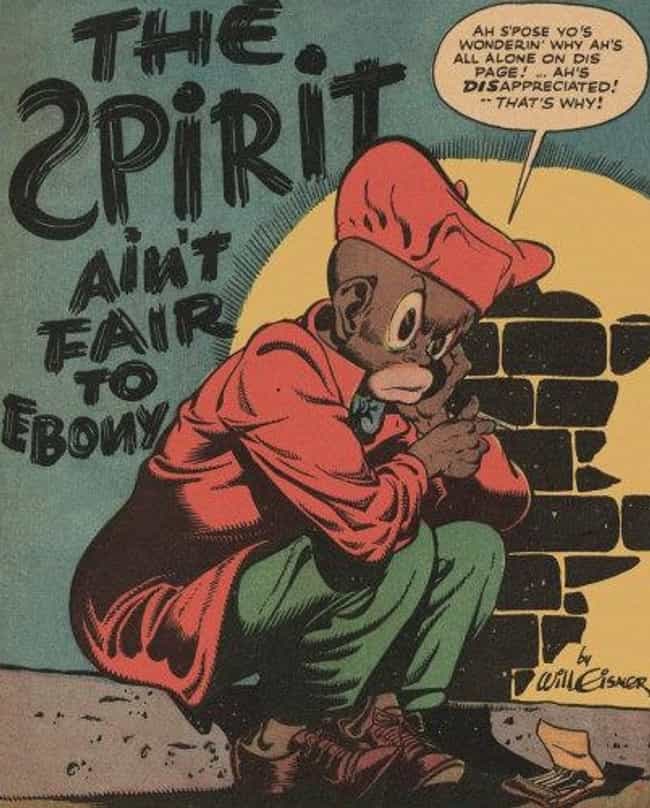
Anyone with eyes can see why Ebony White, sidekick to The Spirit is an atrocity of racial stereotypes on an apocalyptic level. Created in the 1940s by Wil Eisner, he drew obvious comparisons to an Uncle Tom from critics and fans alike. Eisner reported receiving letters of both praise and criticism for the character at the time. In a 1966 New York Herald Tribune feature by his former office manager-turned-journalist, Marilyn Mercer claimed, "Ebony never drew criticism from Negro groups (in fact, Eisner was commended by some for using him)..."
While we truly believe that without Wil Eisner, we wouldn't have modern comic artists like Dave Taylor, or Juan Giménez drawing wildly creative art - we do think that Eisner's defense of his Ebony White character is total BS and that it set back Black culture in comic books almost 50 years.
Murray Boltinoff Was The Worst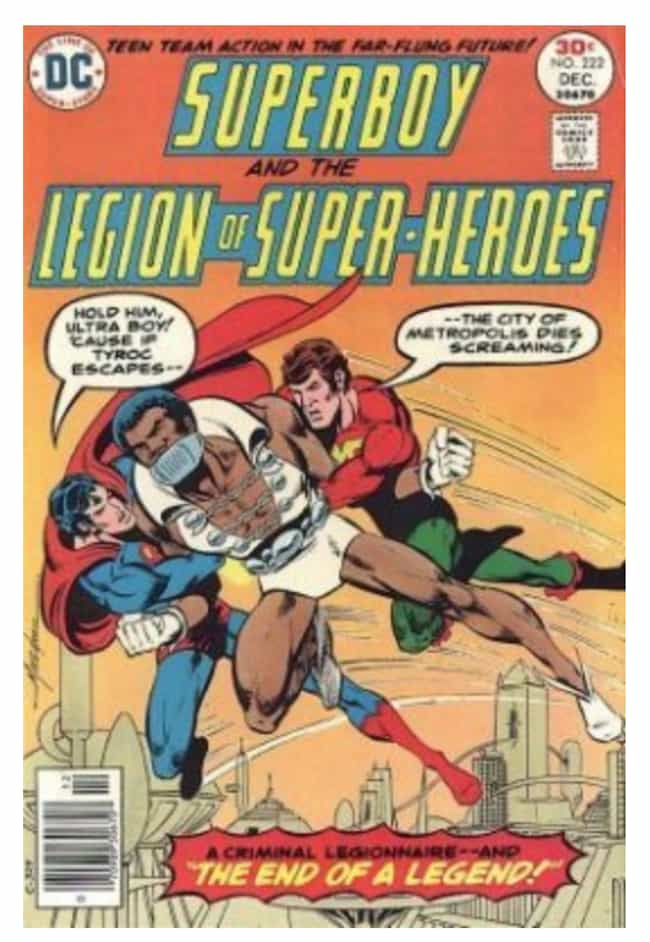 |
| Photo: Superboy & the Legion of Super-heroes #222/DC Comics |
Up until 1976 there hadn't been one Black character presented in DC Comics. "Why?" you ask. Well, we don't know if it's because Murray Boltinoff was a racist monster that wanted to banish people of color to another universe, but we do have some proof that our theory is semi-accurate.
The first Black character introduced in DC comics was Tyroc, a racial separatist who lived on an island off the coast of Africa that could disappear at will. Yes, in DC continuity, everyone that wasn't white lived on an island until 1976. Let that awful thought sink in. And according to Boltinoff, Tyroc couldn't just be a superhero, he had to be a former slave who was a racial segregationist. UUUUGH. Jim Shooter, one of DC's artists at the time called the depiction of Tyroc "pathetic and appalling" and co-creator Mike Grell described Tyroc's segregationist backstory as "possibly the most racist concept I've ever heard in my life."
The Comics Code Censored Judgment Day
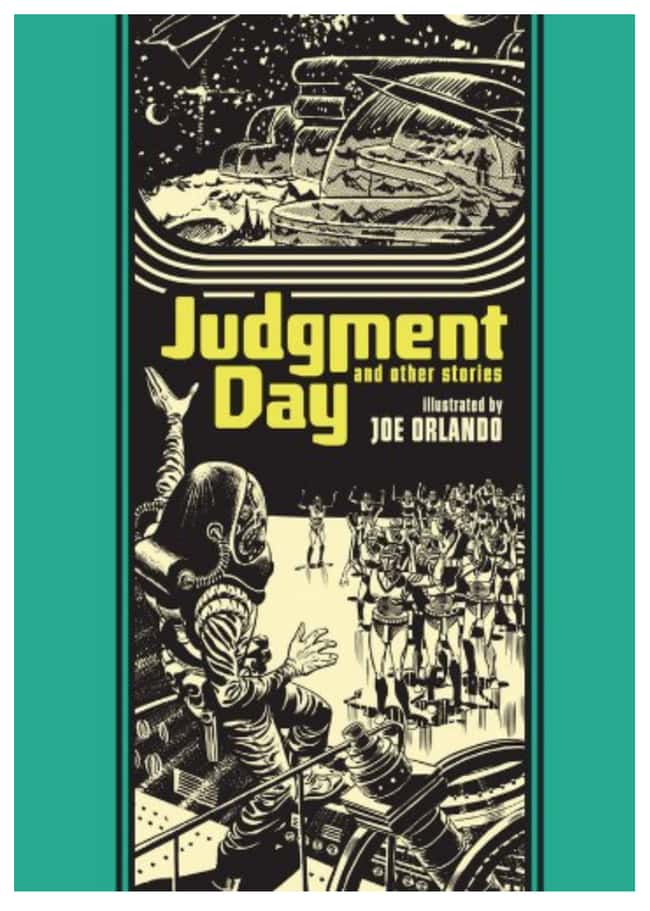
At the height of its powers, The Comics Code committed a glut of sins against art. From the early '50s to the mid '90s, the Comics Code Authority presided over the content of all mainstream comic books, censoring content as they saw fit in order to protect the impressionable young eyes that might see it. The biggest publisher that the CCA put out of business was EC Comics, the infamously pulpy company behind titles like Tales from the Crypt. The Authority’s biggest crime when it came to EC wasn’t its blanket refusal to approve anything that allowed their horror comics to be horrific (gore, monsters, violence, unhappy endings), but the time Comics Code made them recolor a character to be white instead of Black.
Judgment Day was a pivotal comic strip of its era, which handled issues of racial prejudice so well it belied its original publication date of 1953. When EC sought to reprint the story in 1956 – after the formation of the CCA - the Authority demanded that they change the story’s end panel where it’s revealed the astronaut protagonist was a Black man. They had no reasoning beyond their own prejudice, seemingly unaware to the irony considering the story he featured in, and when EC printed the story with editing it, it turned out to be the last comic they ever published before going bankrupt.
Tintin In The Congo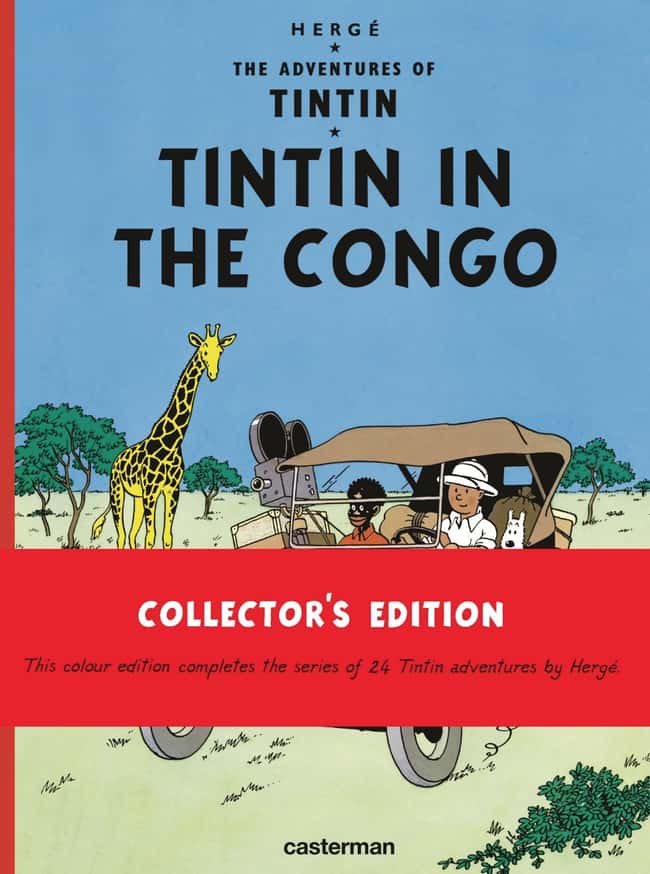
Should we really be shocked that a blonde-haired white kid was ignorant towards other cultures? In states, we weren't inundated with the Tintin mythos the way that our brethren from across the pond were. Maybe it's because we have the ability to look at the Tintin comics with fresh, adult eyes, but it seems like Georges Remi (the creator of Tintin) is a wee bit prejudiced against anyone with a little extra melanin in their skin. At one point in Tintin in the Congo, a Congolese woman bows in front of Tintin and proclaims “White man very great. White mister is big juju man."
As eye rollingly bad as that is, the book serves as a gateway into the way that information was disseminated in the early 20th century. The misconceptions of racial differences were not only bred into people, but they believed to be gospel. And with artists like Remi spreading this misinformation, generations of children grew up believing in the myth of the noble savage. We understand that Remi couldn't have hopped on Google to get a glimpse of the language of the Congolese, but he could have treated his characters like human beings.The Young Allies

Launched in the summer of 1941, The Young Allies were a team of children led by Bucky and Toro, the sidekicks of Captain America and the Human Torch. Thus creating a team the most useless team of sidekicks until Scrappy Doo and Yabba Doo got together in the '80s. The four other useless members of the YA were Knuckles the wildcard, Geoffrey the nerd, a fat kid named Tubby, and every offensive Black stereotype rolled into one called Whitewash Jones. Offended yet? No? Well what if we linked to a few panels of Whitewash Jones's greatest hits? If you'll excuse, we're going to go barf after reading all of those panels.
Green Lantern His Pal Pieface
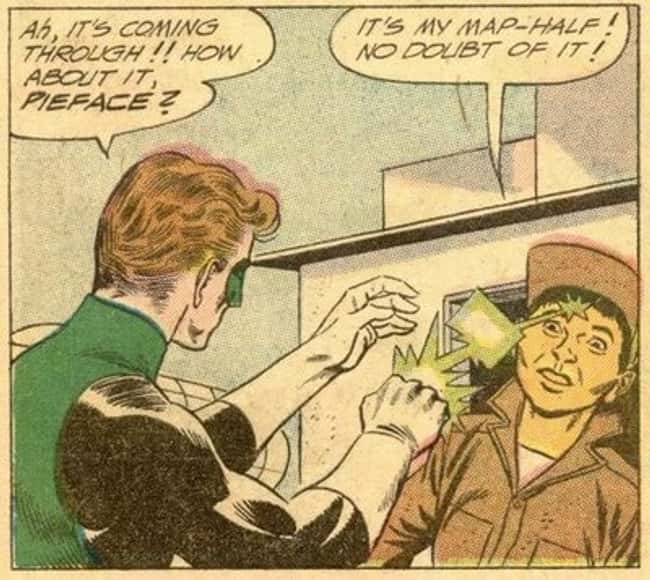
Beginning in the 60s, Hal Jordan kept a few friends around that knew his secret, one of them was an ace mechanic (who happens to be from Alaska) named Thomas Kalmaku. Or maybe you know him by his nickname, Pieface. Ugh. Hal tries to explain it away by tying the "eskimo" to "eskimo pie," but even if we lived in a world where "pieface" wasn't already an established slur, it's not exactly endearing when you give someone a nickname based on their background and combine it with a part of the body. It's like calling someone from Mexico Taco Teeth - it's ignorant and a waste of brain cells.
The Former Life Of Falcon
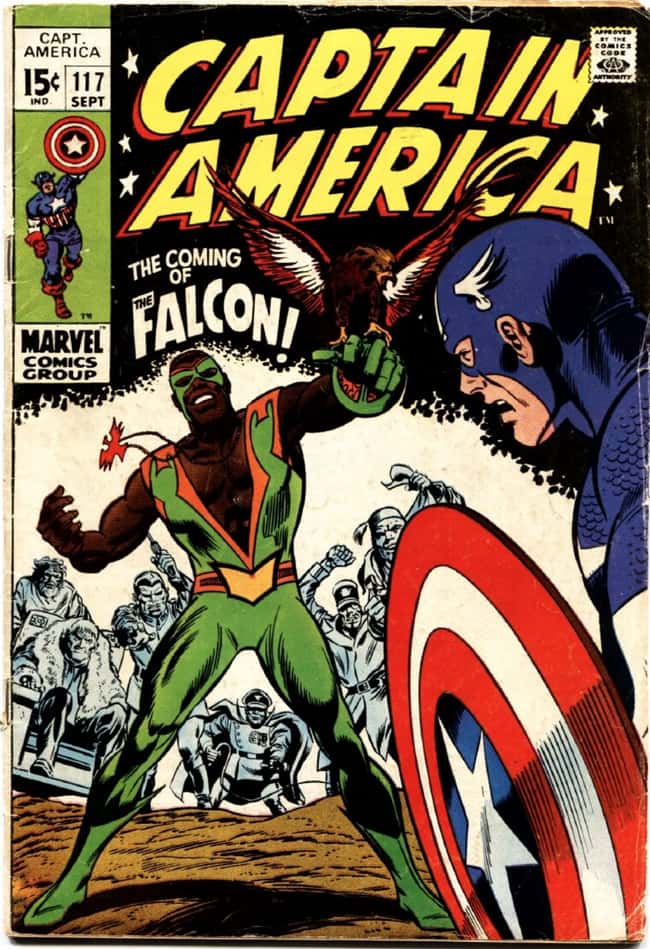
When Falcon was introduced in 1969, he was immediately set apart from other Black characters that preceded him and, in what shouldn't be astonishing news, he was treated like an equal by Marvel's heavy hitters, specifically Captain America. He didn't even have the word Black in his name, which shouldn't be as big of a deal as it is. But then in issue #186 Steve Englehart had to blow it for everybody.
Rather than giving Falcon an honest to goodness superhero backstory, he had to be a former pimp who was brainwashed by Red Skull in an attempt to have someone close to Cap at all times. Or something like that? Honestly, Red Skull's plan is the worst part of this whole Falcon debacle.
Frank Miller's Holy Terror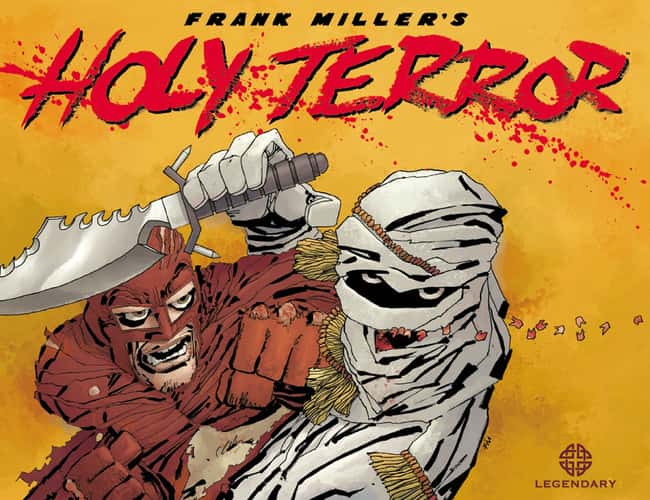
Oh boy, we're do we even start with Holy Terror? Frank Miller began as a comic artist who created some of the best comics ever written (The Dark Knight Returns, Sin City, etc...) to writing All Star Batman, one of the worst Batman comics ever written. ANYWAY, originally conceived as a Batman story, only to be turned down by DC (for reasons that will no doubt become clear), Holy Terror is the best evidence we’ve ever seen for the truism that you grow more conservative as you get older. In Miller’s case, he appears to have switched from outright critic of the right-wing to a member of the nuttiest, most Limbaugh-loving Tea Party member in the world.
When it was still in the hands of DC, Holy Terror was pitched as “Batman fights Bin Laden." But after they dropped it like a hot potato, things got worse. The comic became an Islamophobic and racist piece of garbage masquerading as propaganda. It equates all Muslims with Al Qaeda, and is purposefully and willfully offensive. Never mind that the art is holy mess.We Better Not Show This Comic To Lucius Fox
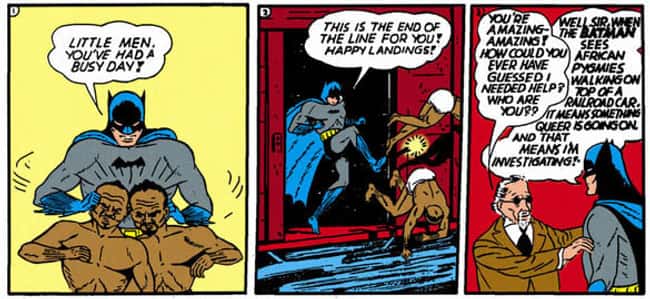
Everyone knows that Batman is the world's greatest detective, but did you know that he's also the world's greatest racist? That's right. No crime, no matter how vaguely race related it is slips past him. Including the Case of the Missing Link, where a group of Black pygmies riding on top of a train lead Batman on a wild goose chase where he ends up helping a blind professor. Racial profiling much?
Once Lois Lane Went Black - You'll Never Believe What Happened Next
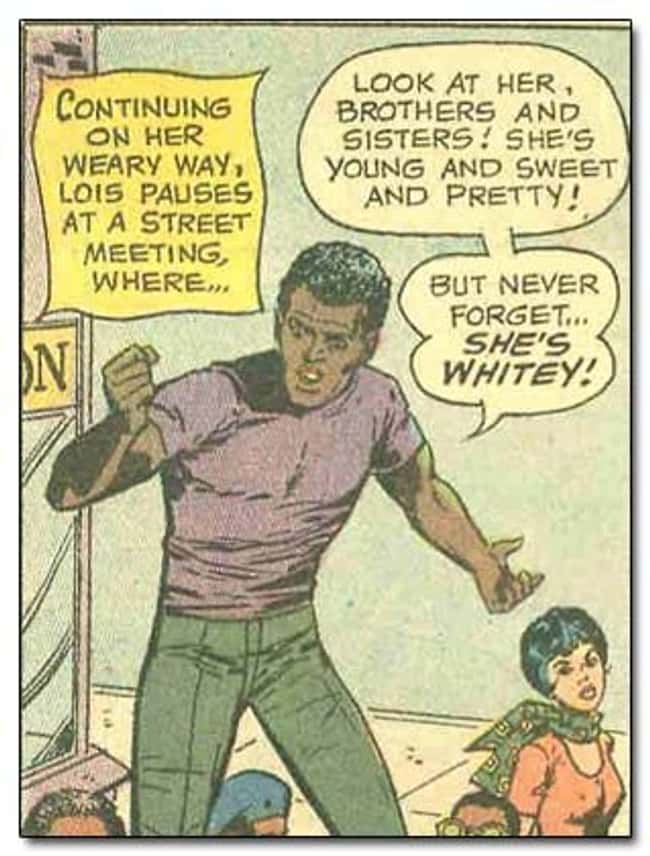
In issue #106 of Superman's Girlfriend Lois Lane, DC attempted to put a nail in the whole racism thing by sending Lois to Little Africa, Metropolis's answer to Harlem for... some reason? The news we guess? Whatever the reason, she was pretty sure she'd be winning a Pulitzer. Fine. Whatever. When she visits Little Africa and starts asking questions, people just call her "Whitey" and tell her to scram, so he has Superman CHANGE HER SKIN COLOR so she can get a better understanding of what it means to be Black.
It's obvious that this comic means well. The writers wanted to show the jarring differences between two groups of people that live in the same city. But it's naive to think that Lois, a white woman, should be rewarded for putting on Blackness for a few hours to rub elbows with the common people.
That Time Batman Wouldn't Stop Saying "Chinaman"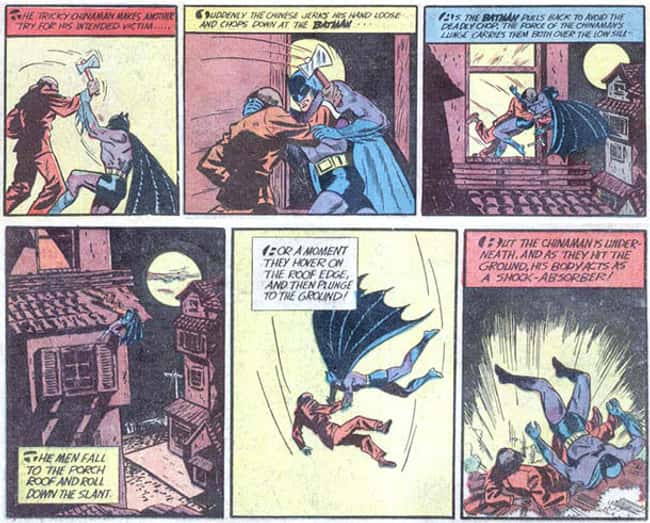
As a character, Batman gets redefined several times a generation. He's a tortured loner, a campy joke, a barking sadist, and an angsty teen. However, the one trait he always has across all media and reboots is his refusal to take a human life. Well, that Batlaw does not apply to anyone east of Russia. Then, Batman doesn't care about you until he needs a place to land.
Egg Fu
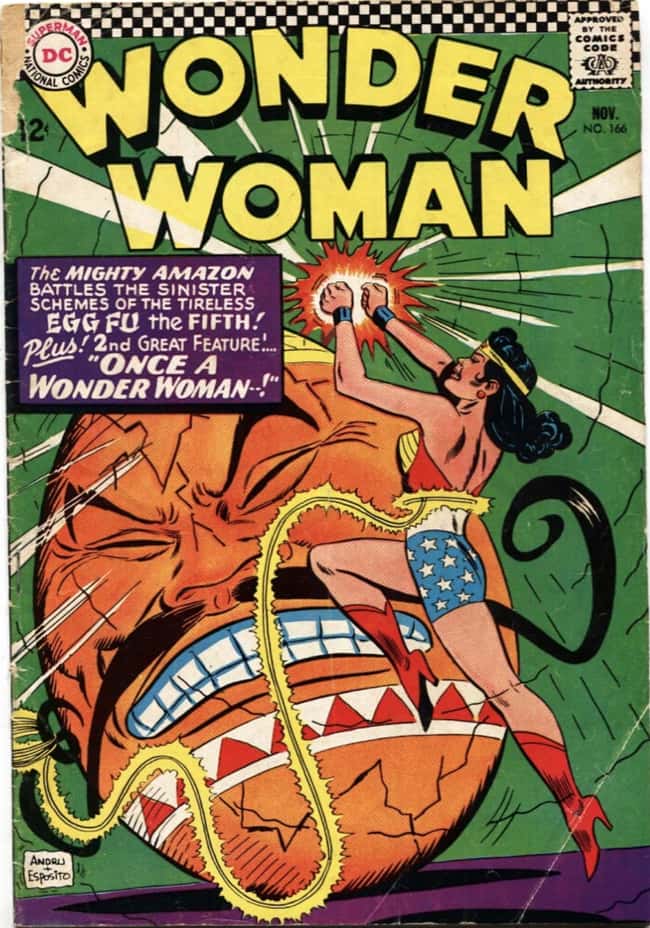
Egg Fu seems like a character that you would see in an episode of South Park. In the 60s, he was a Wonder Woman villain who used his mustache and unexplainable size to attack and subdue his enemies. And he said things like "The foolish Amelicans" and "Rong Range." Oh, and who can forget this nugget, "Ladar warns us that will be vely vely soon!"?
Even in Egg Fu’s Post-Crisis incarnation in Wonder Woman vol. 2, #128, he was the subject of public protests proclaiming his social insensitivity. In this imagining, he was embodied as a nineteenth-century supercomputer who, after being discovered, was turned into a public attraction along a popular boardwalk.Rawhide Kid
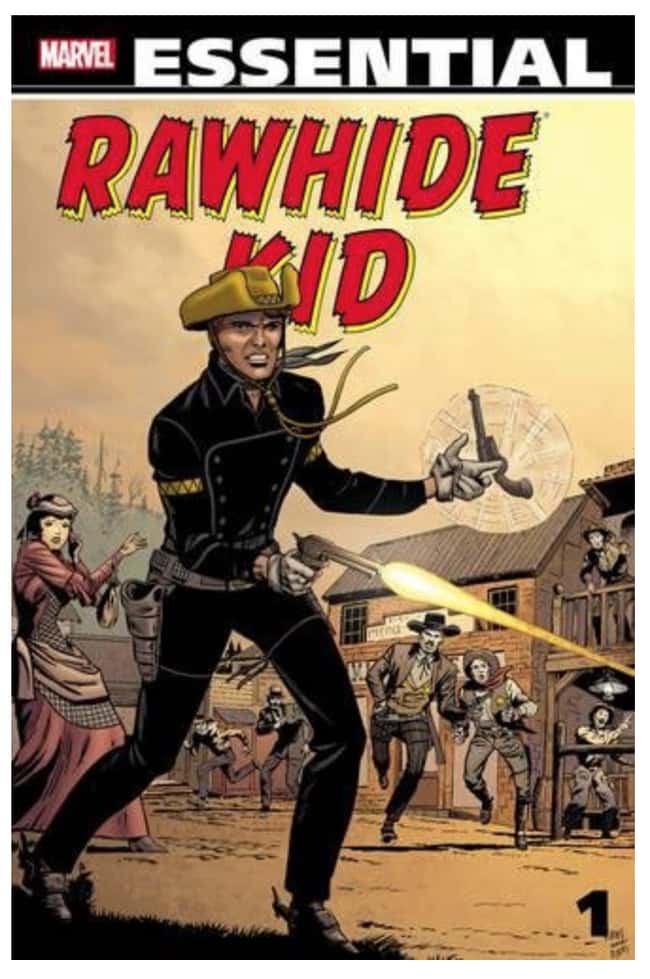
Seemingly created after watching this gif on repeat for 48 hours, Rawhide Kid was an attempt to create a gay character that wasn't your usual mincing stereotype. Somehow that got lost in translation and he was turned into a a nancing, effeminate goon and the exact kind of character with whom people didn't need to identify the gay movement. Think of Paul Lynde, but in a cowboy hat.
Marvel could have created a character that positively impacted the homosexual image in the eyes of the mainstream comic audience and maybe given some folks a fresh perspective. Instead, they wheeled out every corny stereotype and made an aggressively annoying character that no one under any circumstances would want to read.Justice Society Of America
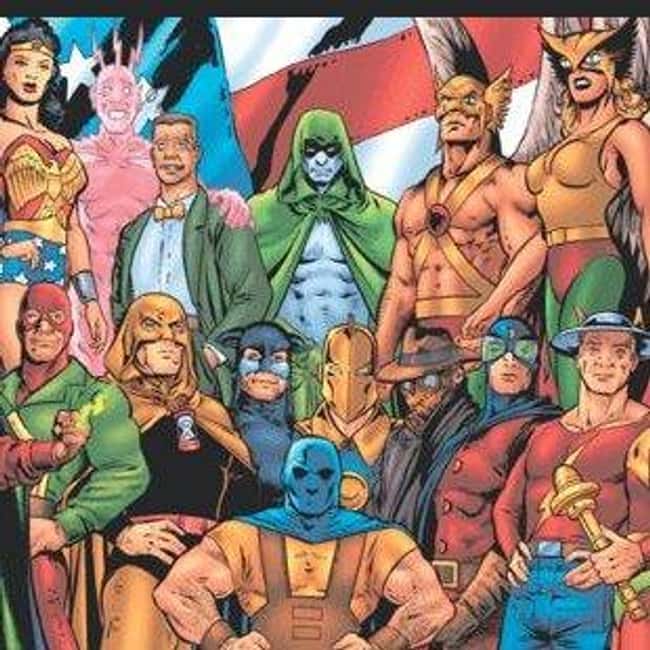
You're gonna need a bigger YIKES for this one. When you're the oldest superhero team in existence, you're going to have some skeletons in the closet. But geez Louise do you guys have to be so racist? Throughout the '40s, the JSA spent most of their days helping the US military fight the Japanese during WWII. And uh... they also used a lot of terrible slurs.
Shamrock
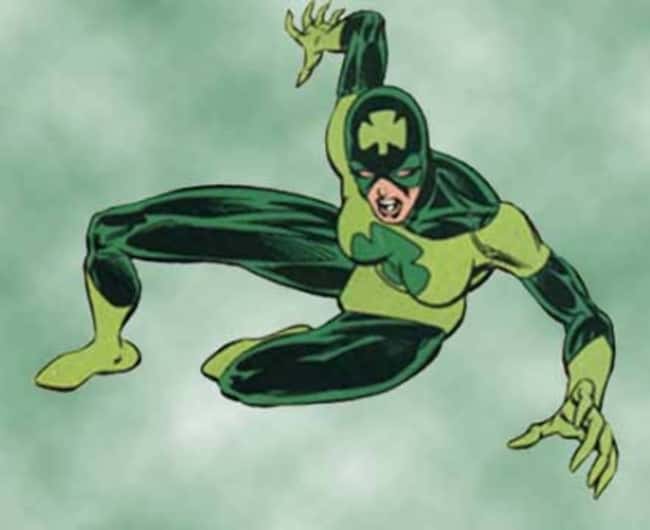
There are a lot of stereotypes about people from Ireland: they're drunk, lazy, and they start great post punk bands. Oh, and they're super lucky for some reason. So when Marvel decided to create a hero that the Irish look to in times of need, they drew up Shamrock. Her power is actually kind of cool. She's possessed by the ghosts of dead soldiers who have unfinished business, which could be an open door to tell SO MANY GREAT STORIES. But instead, Marvel decided they wanted it manifested as "poltergeists which affect probability within a 20-foot radius of her, altering situations so that she is given an advantage."
Readers so disliked Shamrock (or "Molly Fitzgerald" if you're nasty and can't think of a better name for an Irish person) that she eventually retired from being a superhero to become a hairdresser. Um... Molly, you do know that you can move to Las Vegas and own the freakin' town right?Black Goliath
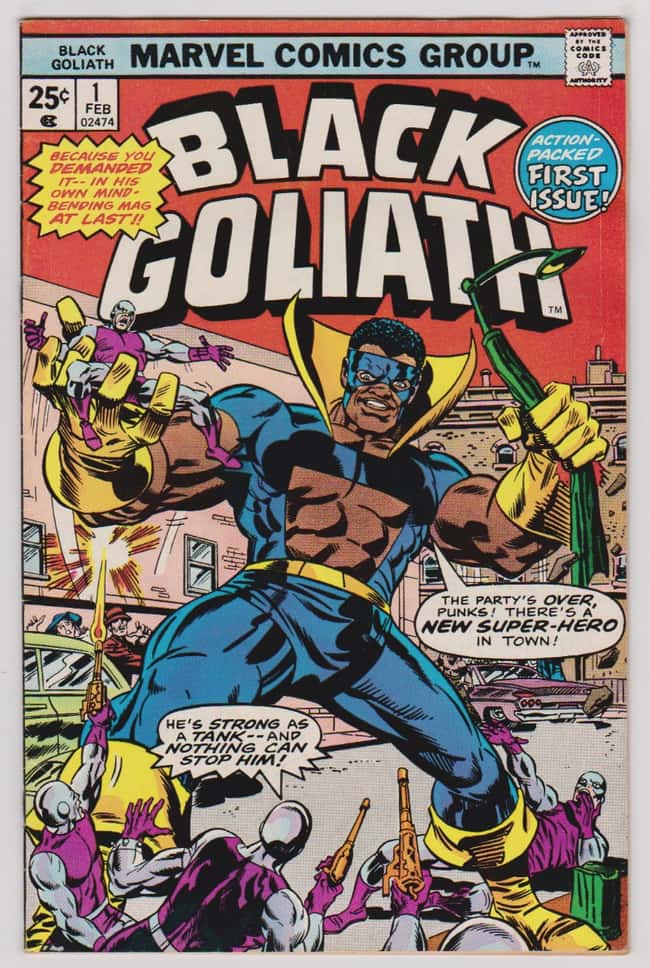
We could have picked any number of “Black” characters in comics, but Dr. Bill Foster stands out, as there were several other heroes who all called themselves Goliath, all got their powers from the same source, and all grew to gigantic size. The difference between the first three heroes, who called themselves Goliath, and Foster, a kid from the ghetto who broke out of the slums, and became a brilliant scientist, then gained growing powers, and called himself Black Goliath? They were all white.
Jubilee The Firework Queen
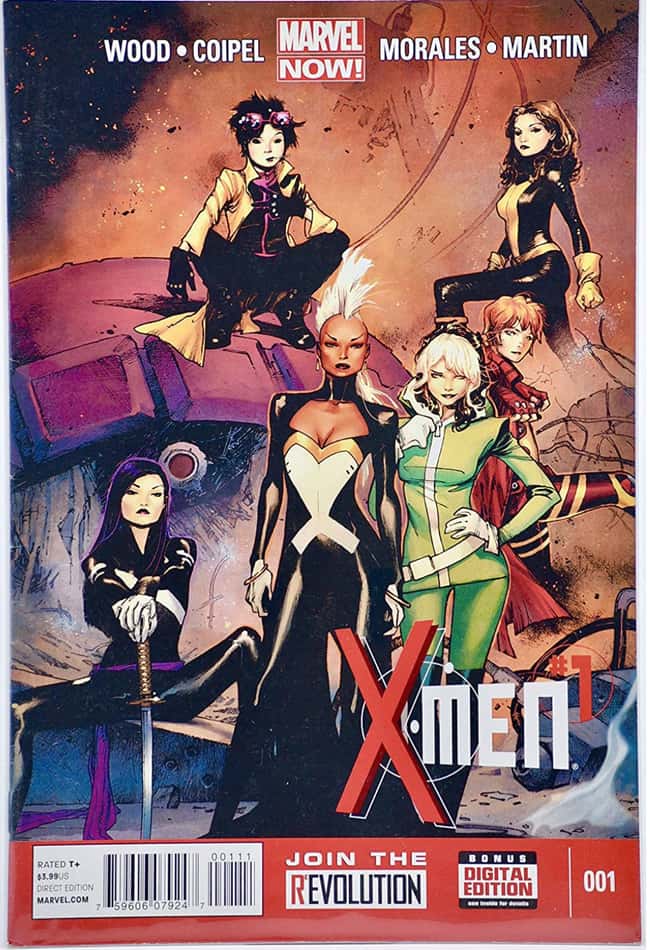
Not only did Marvel make one of the worst members of the X-Men a Chinese-American teen girl (they really covered all the bases of self loathing on that one), but when it came time to give her powers, the best they could do was "fireworks." Sorry guys, that's not an ability. It's actually a job performed by millions of Chinese child laborers. It's not as bad as giving her the power to grow buck teeth or giving her the ability to spray people with orange chicken sauce, but it's up there.
The X-Men
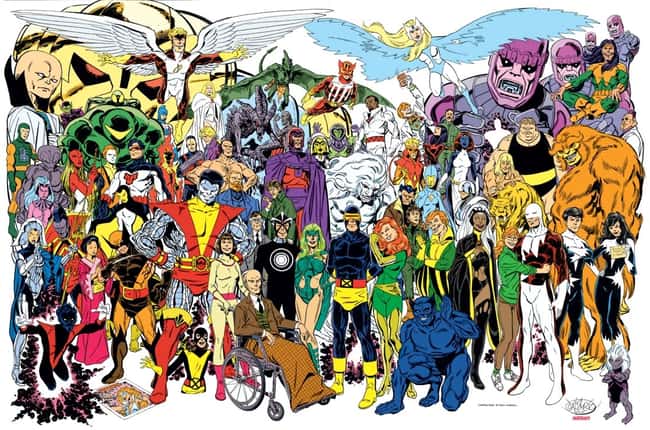
Before you unleash your adamantium comments on us, we know that the X-Men are an allegory for civil rights or whatever and that they're used to tell stories about racial inequality, homophobia, and general bigotry - but are they actually any good at telling those stories? As good as the writers intentions may be, they tend to trip themselves up when they try to be the voice of minority rights.
There's the Kitty Pryde, "M Word" storyline that we believe was meant to do some good, but it has the very gross feeling of a white writer ~finally~ having the chance to unleash a few racial slurs in the name of equality. Even when they aren't using hate speech to sort of kind of make a point, the writers are creating one note ethnic characters that don't serve a purpose beyond filling a quota. Characters like the Native American James Proudstar (whose power is that he's good at tracking?), and the overtly racist Sunfire (he's Japanese! He calls every body "san!") do nothing to help the lack of diversity in comic books.https://www.complex.com/pop-culture/2018/04/racist-moments-in-comic-book-history/
Apr 17, 2018

Black Lightning lived in the Southside of Metropolis

Comic: Black Lightning #1
Year: April 1977
Year: April 1977
We know everyone has to come from somewhere but did DC's black superhero Black Lightning have to come from the "Southside of Metropolis," which was known to many as "Suicide Slum"? Sure, black folk do come from crime-ridden areas, but why do we need to see the two-sides of Metropolis painted this way? White AF Superman wouldn't go to the Southside, so they needed their own hero to police things? Leaves a bad taste in your mouth. Thankfully, The CW did away with that backstory in their live-action series and had Black Lightning hail from a city called Freeland.
Falcon might have been a pimp
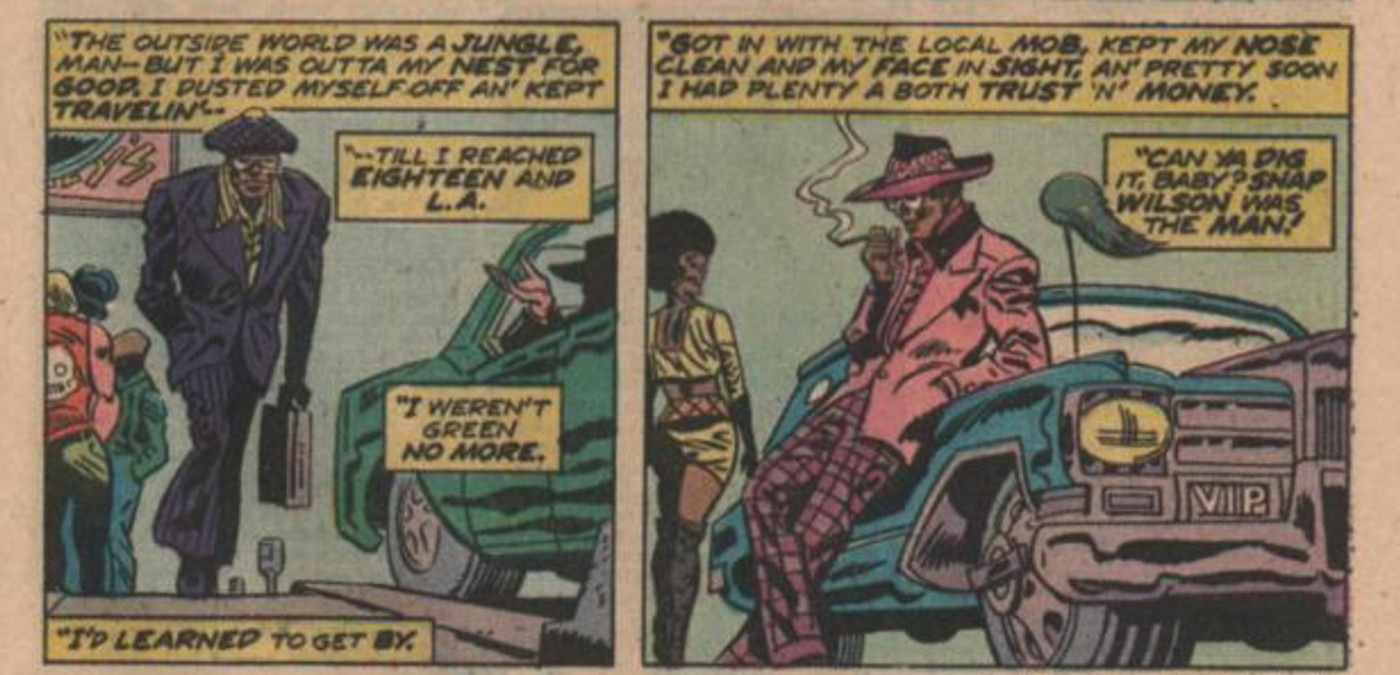
Comic: Captain America #186
Year: June 1975
Year: June 1975
DC isn't the only offender; Marvel's done some shady shit when it comes to black people, too. Sam Wilson, better known as Falcon, debuted in September of 1969 as an equal to Captain America. In fact, years later, Falcon would be Captain America. He's one of the few black heroes who doesn't have "Black" in his name (props to you, Stan Lee), but that didn't stop Steve Englehart from rewriting Falcon's history when he took over the series. He took the Harlemite social worker who has a way with birds and gave him a phase as "Snap" Wilson, relocating him to Los Angeles and making him operate on the shadier side of the law.
While it's never actually stated that Falcon was a pimp at any time in his life, he was no doubt working for the mob. This means he could have been robbing people, beating people, setting fires, shaking down businesses, and, ultimately, killing people. Even if he wasn't a whole pimp, why the hell did Sam Wilson's backstory have to retcon him as a thug? I'll let you answer that yourself.
Whitewash Jones embodies every black racial stereotype
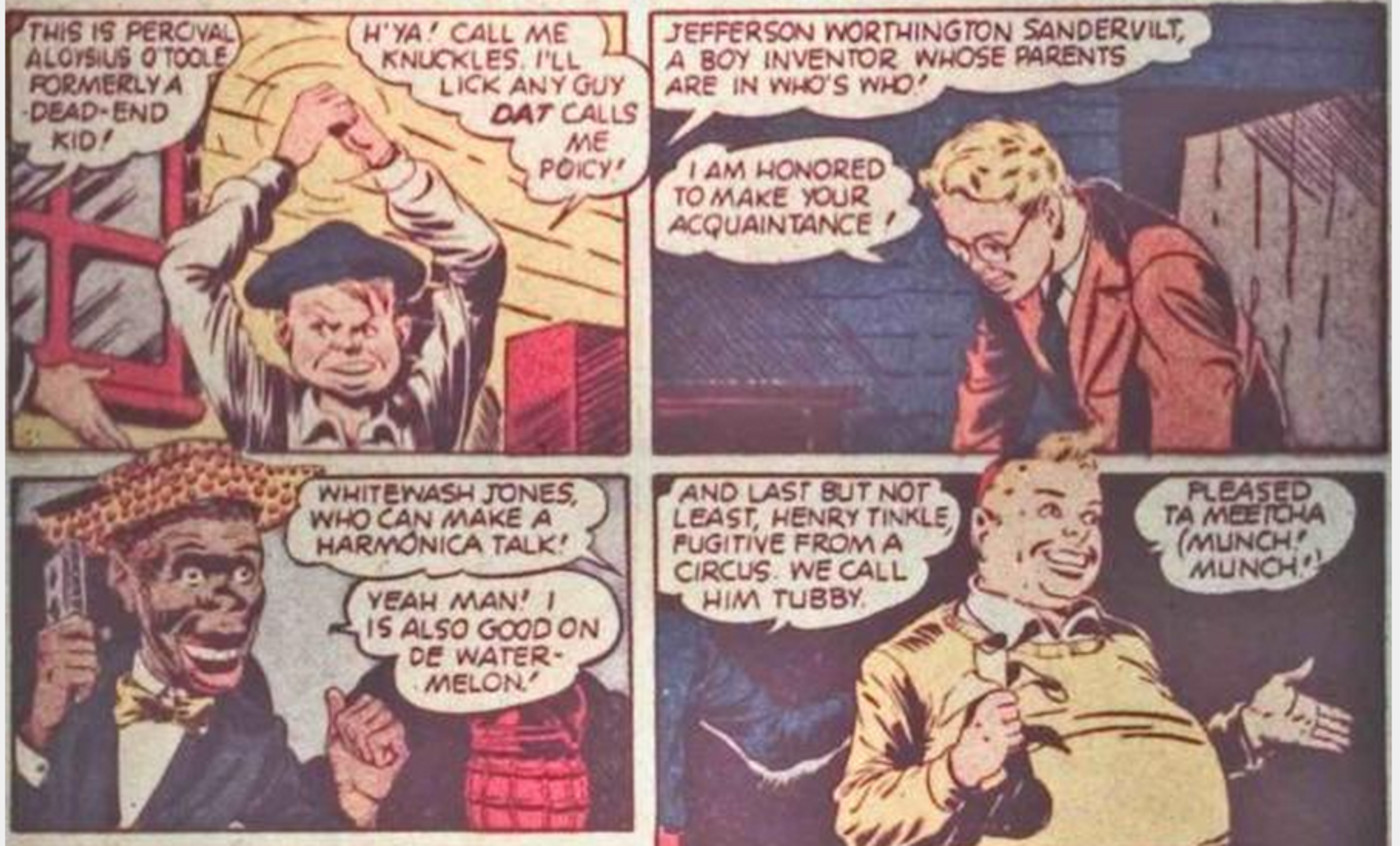
Comic: Young Allies #1
Year: Summer 1941
Year: Summer 1941
Back in 1941, Marvel gave Captain America's homeboy Bucky Barnes a squad of his own: the Young Allies. They were essentially his sidekicks, but one of them was a heinous racial stereotype brought directly to ink. While his given name was Washington Carver Jones, the character was sadly known as Whitewash Jones, which is not only odd but racist as hell.
Whitewash, while part of the crew, was apparently only good at "de watermelon" and could "make a harmonica talk." He looked like the worst minstrel show rendition of a black person and was a bumbling idiot to boot. He'd say shit like "gosteses" instead of "ghosts," and was drawn to look more like a monkey than an actual human being. At least he was fighting the Nazis?
Years later, Marvel retconned the whole damn comic book, saying that the series was sensationalized propaganda that even went as far as depicting Bucky's squad as 12-year-old kids as opposed to the grown men they really were during that era. Kudos to them for that, but what in the actual fuck?!
Captain Marvel owned a slave
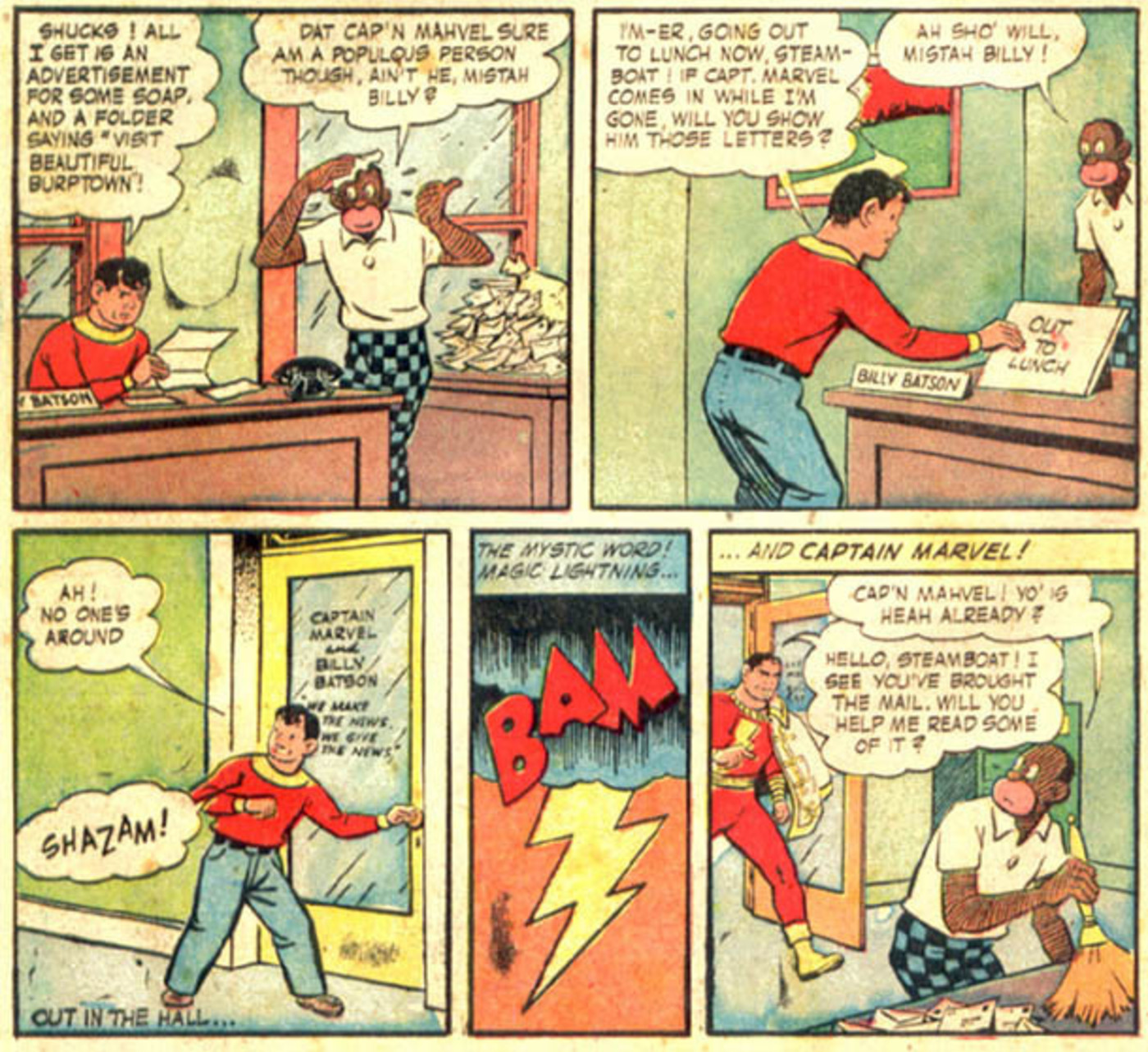
Comic: America's Greatest Comics #2
Year: February 1942
Year: February 1942
Similar to Marvel's Whitewash Jones was DC Comics character Steamboat, who looked and felt like the racism from minstrel shows had bled into the pages of a children's comic. Not only was Steamboat Captain Marvel's actual slave, but everything from his exaggerated speech to being drawn like a cartoonish chimpanzee made Steamboat feel like he was conceived by a KKK member. The weirdest shit is that Steamboat never seems to pick up on the fact that Batson is Captain Marvel, the guy he literally spent the most time in the world with. Why? Probably because he's an ignoramus.
Lois Lane becomes a black woman
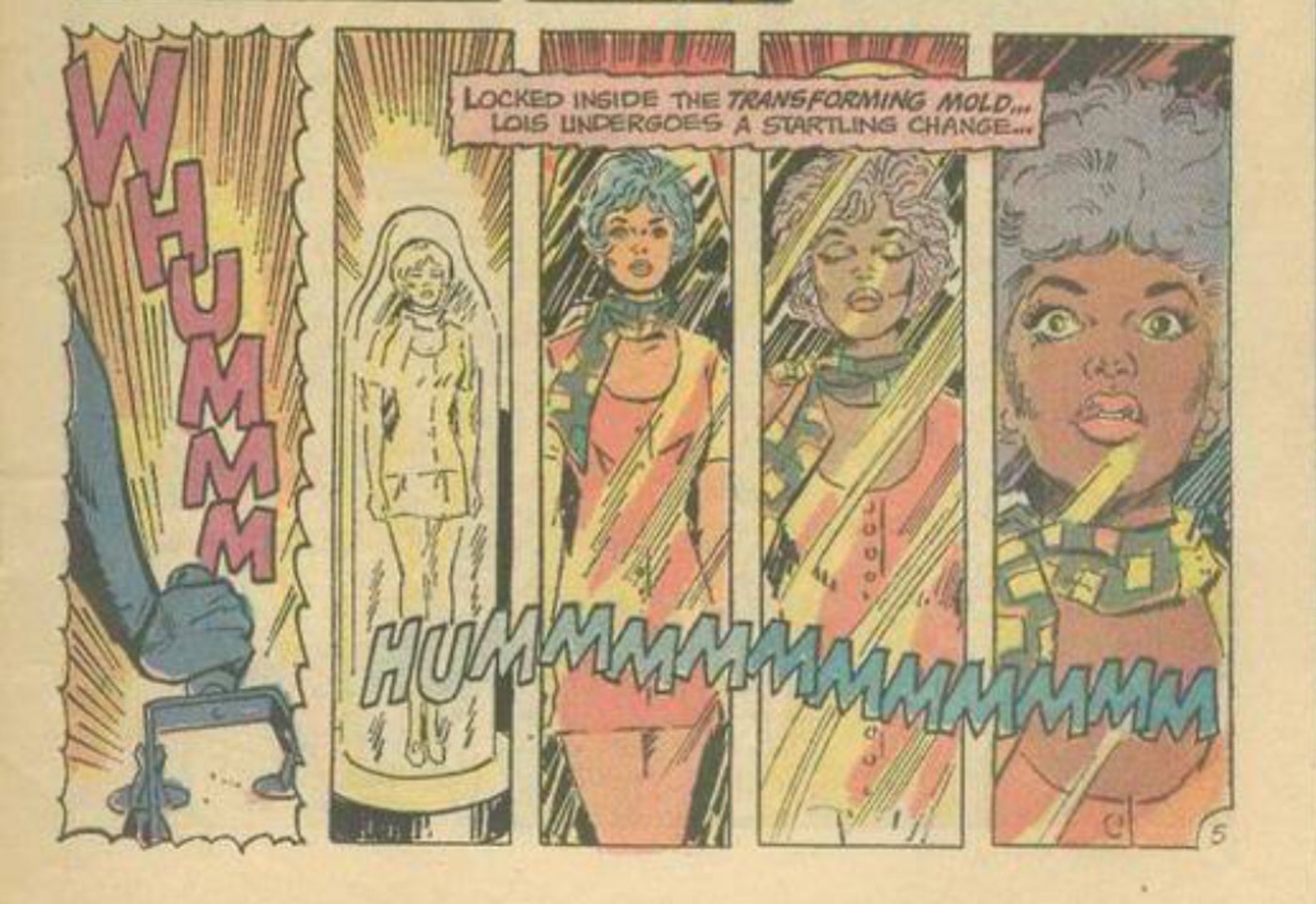
Comic: Superman's Girlfriend, Lois Lane #106
Year: November 1970
Year: November 1970
In one of the most insane pieces of comic book content, ever, a 1970 comic featured Superman's girlfriend Lois Lane literally becoming a black woman for a day. Why? To help her understand the plight of black folk for a story she was working on; one that she hoped would get her a Pulitzer.
After arriving in Little Africa (aka Metropolis' Harlem), Lois realizes that none of the people in the (predominately-black) town want to speak to her. She happens upon Superman, who has a great idea on how to help Lois out: he has a machine that would effectively put Lois in blackface, so she can better speak with the residents of Little Africa. The new, "black" Lois Lane now lives life like a black person, starting off with a taxi not slowing down for her (which she calls her "first lesson in the meaning of Black"). Lois even felt some type of way when she pressed Superman about possibly marrying her if she was a black woman and he chumps her off. He actually tries to compares his being an alien from another planet to the black experience in the world, as if he doesn't still work and operate in the white world.
While the story is an intriguing mirror of the cultural appropriation we see in music and movies today, it also simplifies the black experience in this country. Nothing about being black can be understood (or, worse, rectified) by playing dress-up for a day.
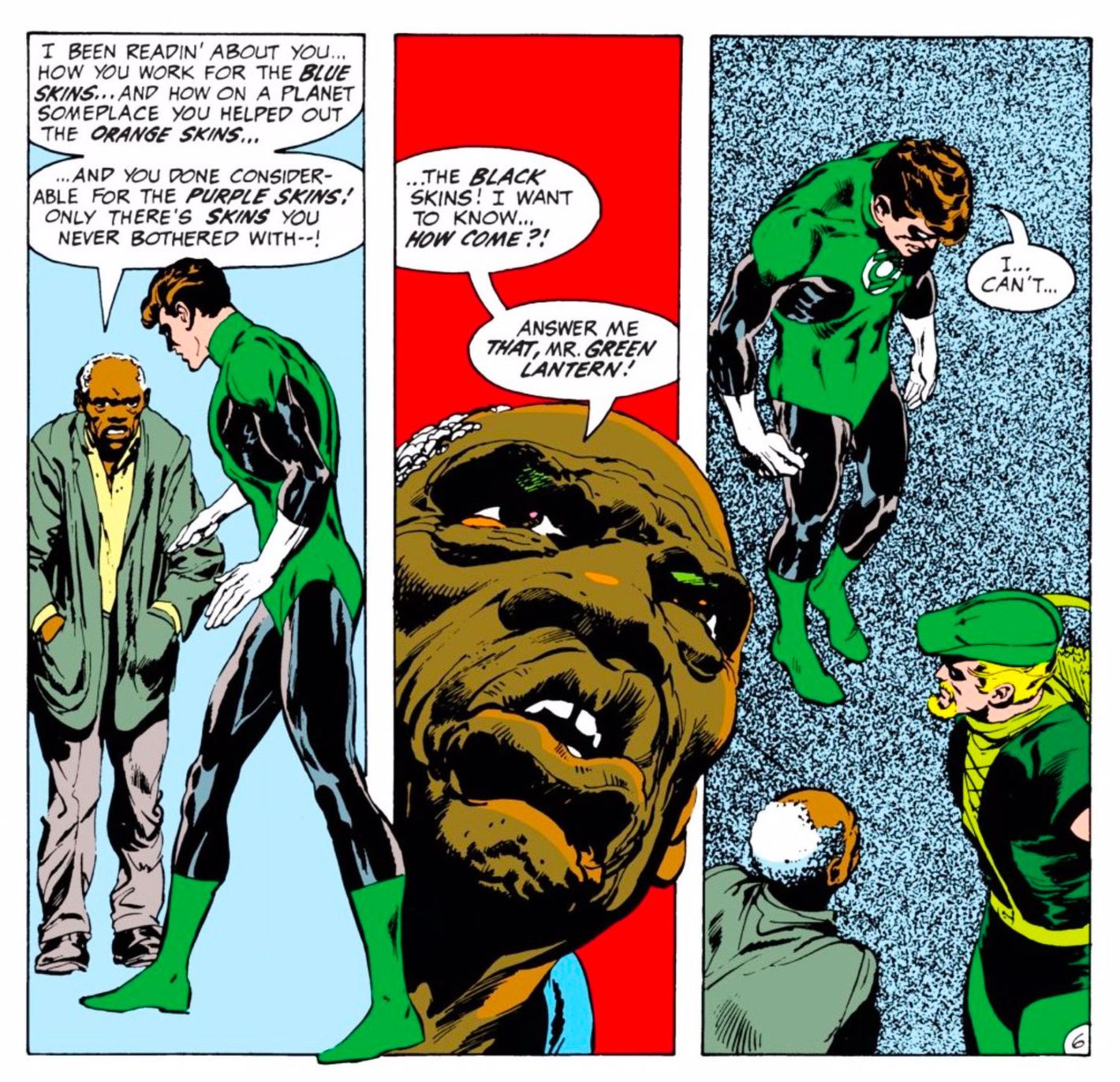
+++++++++++++++++++++++++++++++++++++++++++++++++++++++++++++++++++++++
+++++++++++++++++++++++++++++++++++++++++++++++++++++++++++++++++++++++
+++++++++++++++++++++++++++++++++++++++++++++++++++++++++++++++++++++++
- Bloggery committed by chris tower - 2009.06 - 10:10
- Days ago = 1892 days ago
- New note - On 1807.06, I ceased daily transmission of my Hey Mom feature after three years of daily conversations. I plan to continue Hey Mom posts at least twice per week but will continue to post the days since ("Days Ago") count on my blog each day. The blog entry numbering in the title has changed to reflect total Sense of Doubt posts since I began the blog on 0705.04, which include Hey Mom posts, Daily Bowie posts, and Sense of Doubt posts. Hey Mom posts will still be numbered sequentially. New Hey Mom posts will use the same format as all the other Hey Mom posts; all other posts will feature this format seen here.

No comments:
Post a Comment